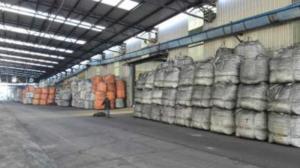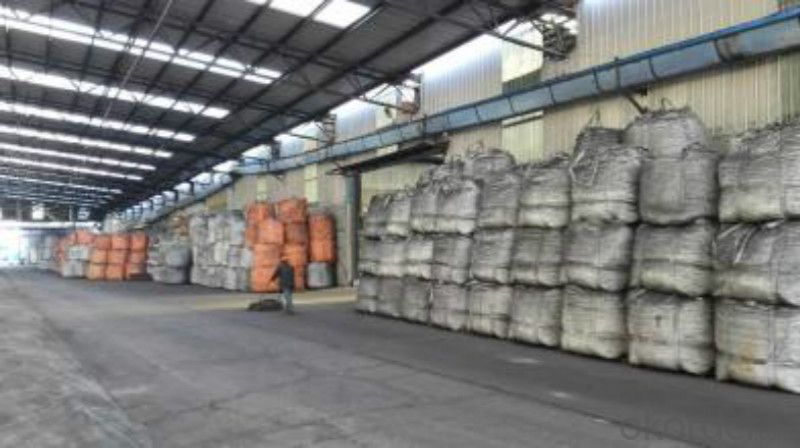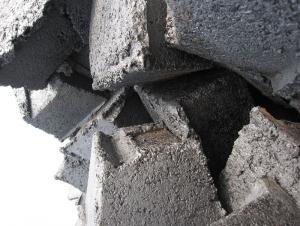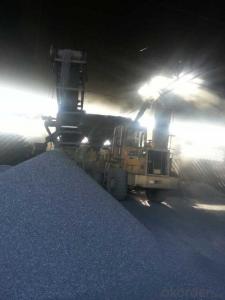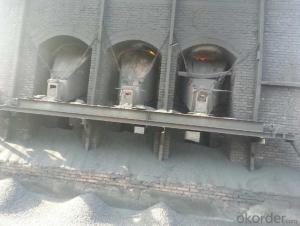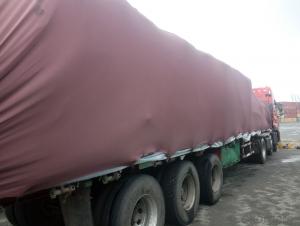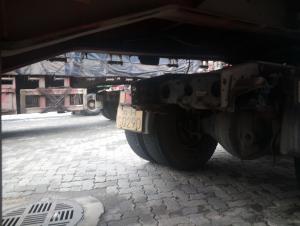Calcined Pitch Coke with size 0-5mm 90%min
- Loading Port:
- Tianjin
- Payment Terms:
- TT OR LC
- Min Order Qty:
- 22 m.t.
- Supply Capability:
- 8000 m.t./month
OKorder Service Pledge
OKorder Financial Service
You Might Also Like
Introduction
Pitch Coke/Coal Tar Pitch is a kind of black brittleness and blocky piece, lustrously at normal temperature. It has special odour and poisonous and can be easily flame when melting, second-grade inflammable solid.
Pitch Coke/Coal Tar Pitch is obtained from powerfully processed coal tar. Compared to petroleum asphalt, the adhesiveness is better. Coal Tar Pitch is high quality tar production with high fixed carbon. It has excellent adhesion, waterproofing and resistance against seawater, oil and various chemicals. In these properties, it is much better than petroleum asphalt tar.
It can be used to produce painting, electrode, pitch coke, and tar felt. It also can be used as fuel and the raw material of asphalt carbon black.
Features:
The morphology, chemistry and crystallinity of recarburisers have a major impact on the overall casting cost. The combined application and cost benefits, which are derived through the use of Desulco, enable foundries to manufacture castings in a highly cost effective manner.
reduces
Recarburiser consumption
Power consumption
Inoculant consumption
MgFeSi consumption
Furnace refractory wear
Scrap rate
Tap to tap time
Slag inclusions risk
Chill
increases
Casting microstructure
Productivity
Process consistency
Carbon Recovery
Compared with calcined petroleum coke, acetylene coke and
graphite electrode scrap, Desulco yields the highest carbon
recovery and fastest dissolution time
Specifications:
CPC | |||
F.C.% | 98.5MIN | 98.5MIN | 98MIN |
ASH % | 0.8MAX | 0.8MAX | 1MAX |
V.M.% | 0.7 MAX | 0.7 MAX | 1 MAX |
SULFUR % | 0. 5MAX | 0. 7MAX | 1MAX |
MOISTURE % | 0.5MAX | 0.5MAX | 1MAX |
Pictures:
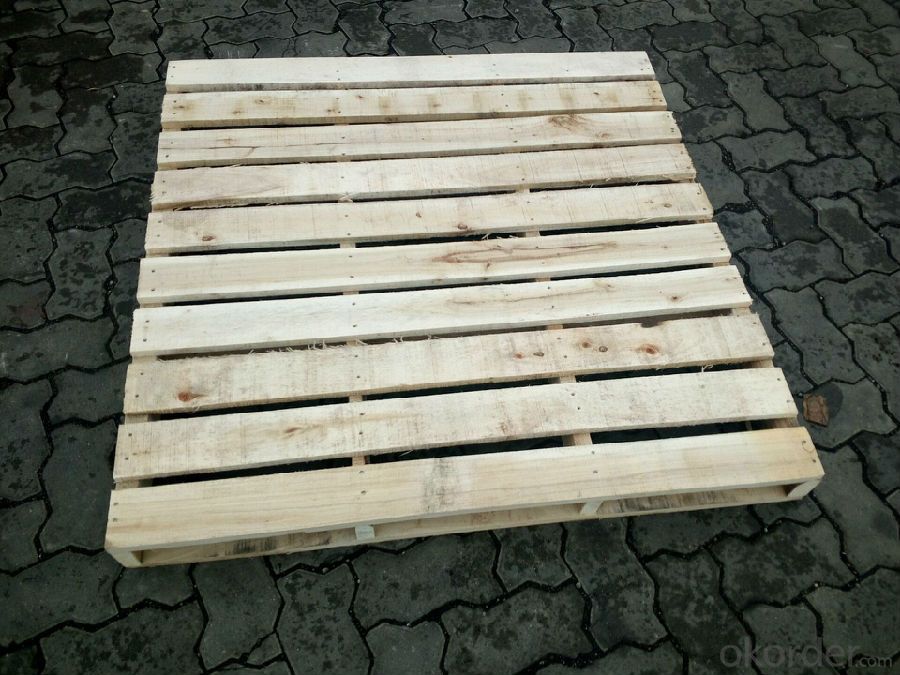
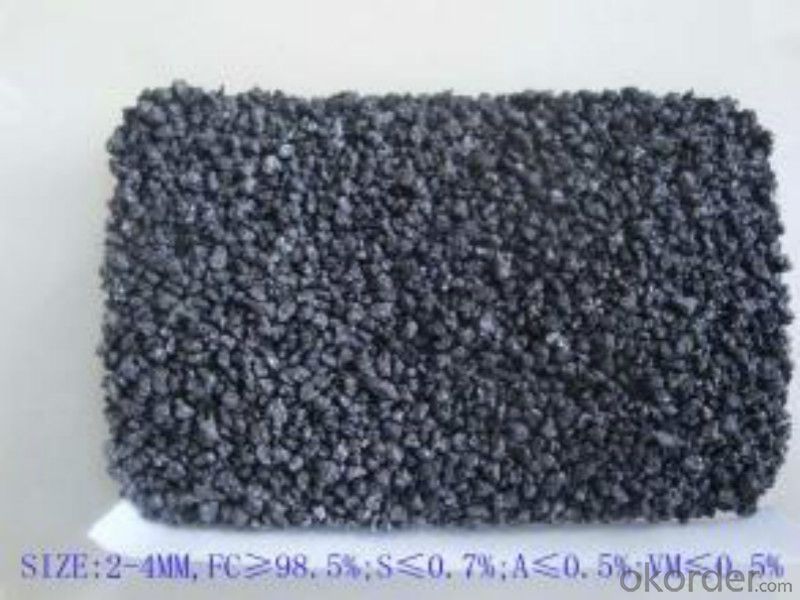

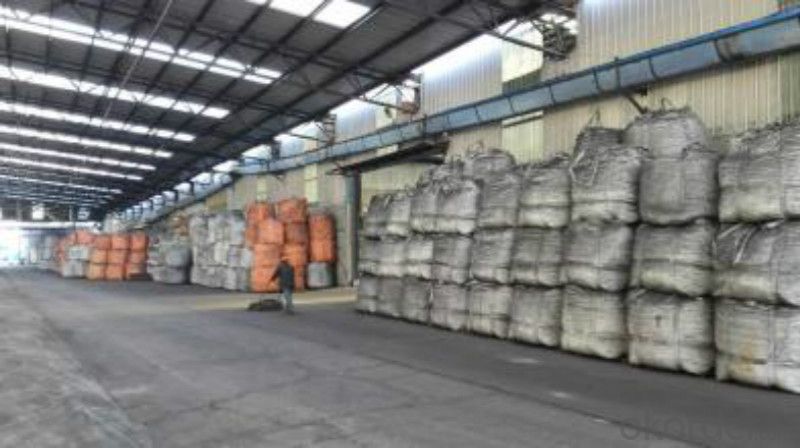
FAQ:
1.MOQ:2 Containers |
2.Size:1-3mm,1-5mm,2-6mm,3-5mm and as the customer's requirement |
3.Packing: 1 ton jumbo bag or 25kgs paper in bag |
4.Payment:T/T or L/C at sight |
5.Delivery time: within 15 days after receiving the deposit |
6.Usage: it is as carbon raiser,widely used in steelmaking,casting,casting iron,steel foundry,aluminum metallury. |
- Q: What are the 3K, 12K, UD, etc. in the appearance requirements of the carbon fiber bicycle? What's the difference?
- 3K and "12K" refer to carbon fiber woven fabrics. 3K 12K cloth cloth texture is fine, coarse texture.UD is not imitation carbon fiber, refers to the polyethylene fiber woven fabric, the strength is lower than the carbon fiber, but the density is smaller than the carbon fiber, is often used to make bullet proof material.Carbon fiber and polyethylene fiber belong to high performance fiber.Advisory 181150695.
- Q: What are the challenges and opportunities of transitioning to a low-carbon economy?
- The challenges of transitioning to a low-carbon economy include the need for significant investments in renewable energy infrastructure, the potential loss of jobs in fossil fuel industries, and the complexity of implementing new policies and regulations. Additionally, there may be resistance from certain industries or regions that heavily rely on carbon-intensive practices. However, this transition also presents numerous opportunities. It allows for the development of sustainable and innovative industries, such as renewable energy technologies, electric vehicles, and energy-efficient buildings. It can create new job opportunities in these emerging sectors and stimulate economic growth. Moreover, transitioning to a low-carbon economy helps mitigate climate change, reduce air pollution, and improve public health, leading to a more sustainable and resilient future.
- Q: How does carbon contribute to the strength of concrete?
- Carbon contributes to the strength of concrete by reinforcing it through the formation of calcium silicate hydrate (C-S-H) gel. This gel fills in the gaps in the concrete matrix, enhancing its density and reducing porosity. Additionally, the carbonaceous material reacts with calcium hydroxide (a byproduct of cement hydration), producing calcium carbonate. The formation of calcium carbonate increases the overall strength and durability of the concrete structure.
- Q: Benefits of reducing carbon emissions
- 1, carbon dioxide in fresh air content of about 0.03%. People living in this space will not be harmed, if the indoor gathered a lot of people, and the air is not circulating. Or indoor gas, liquefied petroleum gas and coal combustion, the oxygen content in the air is relatively reduced, produce large amounts of carbon dioxide, the indoor personnel will appear different degrees of poisoning symptoms. As for the maximum allowable content of carbon dioxide in indoor air, there is no uniform regulation in different countries. Japan has a standard of ventilation when the content of carbon dioxide in the indoor air is 0.15%. The following table shows the effect of CO2 content in air on human body.
- Q: How does carbon affect the formation of earthquakes?
- Carbon does not directly affect the formation of earthquakes. Earthquakes are primarily caused by the movement of tectonic plates, which are large sections of the Earth's crust that float on the semi-fluid layer below. These plates can collide, slide past each other, or move apart, causing stress to build up along the plate boundaries. When the stress becomes too great, it is released in the form of an earthquake. However, carbon can indirectly impact the occurrence of earthquakes through its role in the Earth's carbon cycle and its contribution to climate change. Carbon dioxide (CO2) is a greenhouse gas that is released into the atmosphere through various human activities, such as burning fossil fuels. This excess CO2 in the atmosphere leads to global warming and climate change. Climate change can have several effects on the Earth's crust, some of which may indirectly influence seismic activity. For example, the melting of glaciers and polar ice caps due to global warming can lead to changes in the distribution of mass on the Earth's surface. This redistribution of mass can cause the Earth's crust to adjust, leading to increased stress along fault lines and potentially triggering earthquakes. Additionally, changes in precipitation patterns and the hydrological cycle caused by climate change can affect groundwater levels and pore pressure within rocks. These changes in water content can alter the strength and stability of fault lines, potentially making them more prone to slipping and causing earthquakes. It is important to note that the direct impact of carbon on earthquake formation is minimal compared to the primary factors such as plate tectonics. However, the relationship between carbon emissions, climate change, and seismic activity is an area of ongoing research and scientific investigation.
- Q: How is carbon stored in the Earth's crust?
- Carbon is stored in the Earth's crust through various geological processes such as the formation of sedimentary rocks, the burial of organic matter, and the formation of fossil fuels. These processes involve the accumulation and preservation of carbon-rich material over millions of years, resulting in the storage of carbon in the form of minerals, organic compounds, and hydrocarbons within the Earth's crust.
- Q: What is the relationship between carbon emissions and air pollution?
- The close connection between carbon emissions and air pollution cannot be understated. Burning fossil fuels, such as coal, oil, and natural gas, is the main source of carbon emissions, which release substantial amounts of carbon dioxide (CO2) into the atmosphere. This surge in CO2 levels significantly contributes to the greenhouse effect, which traps heat in the atmosphere and leads to global warming. On the other hand, air pollution refers to the presence of harmful substances in the air that can be detrimental to both human health and the environment. Although carbon dioxide itself is not directly toxic to humans, it plays a critical role in the formation of other air pollutants. One of the primary consequences of increased carbon emissions is the creation of fine particulate matter (PM2.5) and ground-level ozone (O3). These pollutants are formed through intricate chemical reactions involving CO2 and other pollutants like nitrogen oxides (NOx) and volatile organic compounds (VOCs). PM2.5 and O3 are notorious for causing respiratory problems, cardiovascular diseases, and various other health issues. Moreover, carbon emissions also contribute to the development of other air pollutants, such as sulfur dioxide (SO2), nitrogen oxides (NOx), and heavy metals. These pollutants are emitted alongside CO2 during diverse industrial processes, power generation, and transportation. They can have severe health consequences, including respiratory diseases, asthma, and even cancer. The reduction of carbon emissions plays a pivotal role in combatting air pollution. By transitioning to cleaner energy sources, such as renewables, and enhancing energy efficiency, we can significantly decrease the amount of CO2 and other pollutants released into the atmosphere. The implementation of stricter regulations and the adoption of cleaner technologies in industries and transportation can also aid in the reduction of air pollution and its associated health risks. In conclusion, the connection between carbon emissions and air pollution is inseparable. The release of CO2 and other pollutants from burning fossil fuels contributes to global warming and the formation of harmful air pollutants. Addressing the issue of carbon emissions is imperative in mitigating air pollution and safeguarding human health and the environment.
- Q: How does carbon dioxide affect ocean acidity?
- Carbon dioxide affects ocean acidity through a process known as ocean acidification. When carbon dioxide is released into the atmosphere through human activities such as burning fossil fuels, a significant portion of it is absorbed by the oceans. This excess carbon dioxide reacts with seawater to form carbonic acid, which then dissociates into hydrogen ions and bicarbonate ions. This increase in hydrogen ions decreases the pH of the ocean, making it more acidic. The increased acidity of the ocean has several detrimental effects on marine life. For example, it hampers the ability of marine organisms such as corals, shellfish, and plankton to build and maintain their calcium carbonate structures, such as shells and exoskeletons. This can lead to reduced growth rates, weakened structures, and increased mortality rates for these organisms. Ocean acidification also affects the survival and reproduction of many species, including fish and other marine animals. The changes in water chemistry can disrupt their physiological processes, impairing their ability to navigate, find food, and avoid predators. Additionally, the increased acidity can affect the behavior and development of some species, leading to altered ecosystems and potential declines in biodiversity. Furthermore, ocean acidification can have cascading effects on the entire marine food web. As the base of the food chain, phytoplankton and other primary producers may be negatively impacted by the changing ocean chemistry, which in turn affects the organisms that depend on them for food. This disruption can have far-reaching consequences for the entire ecosystem, including commercially important fish species and the livelihoods of coastal communities that rely on them. In summary, carbon dioxide emissions contribute to ocean acidification, which has a wide range of detrimental effects on marine life and ecosystems. Understanding and addressing this issue is crucial to protect the health and sustainability of our oceans and the countless species that depend on them.
- Q: What kinds of carbon black paper do you have?
- ?Five. Characteristics of carbonless copy paperWhen carbon copy is made, no carbon paper is needed, direct writing is convenient and time saving, and the carbon copy number is 2-6 pages, and the electric printing 2-10 pages can greatly improve work efficiency and meet the needs of modernization.The copy is legible, bright, and does not fade. It can be altered or copied.Do not pollute fingers, clothing and other stationery, paper, and keep it clean.Having a variety of colors and easily identifiable.Paper is excellent, smooth and smooth surface, stronger than 28 grams of colored paper, not easy to damage, printing bright colors.No harmful raw materials and peculiar smell, safe and reliable, color and picture can be preserved for more than 15 years.
- Q: What's the difference between carbon steel pipes and stainless steel pipes and seamless steel tubes?
- As the name implies, carbon steel is made of carbon steel, forming mostly by welding, drawing, rolling, adopted the extrusion molding, and the steel tube drawing, rolling, extrusion molding are called seamless steel pipe welded steel pipe.
Send your message to us
Calcined Pitch Coke with size 0-5mm 90%min
- Loading Port:
- Tianjin
- Payment Terms:
- TT OR LC
- Min Order Qty:
- 22 m.t.
- Supply Capability:
- 8000 m.t./month
OKorder Service Pledge
OKorder Financial Service
Similar products
Hot products
Hot Searches

